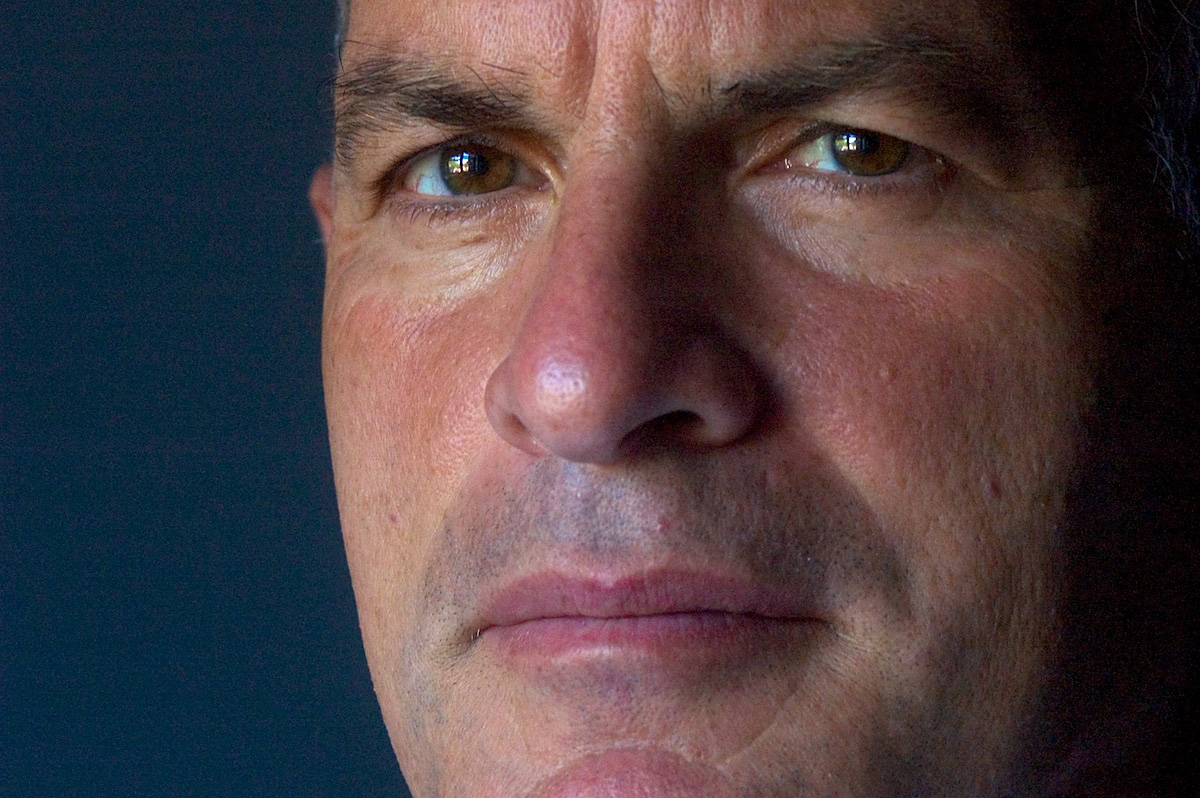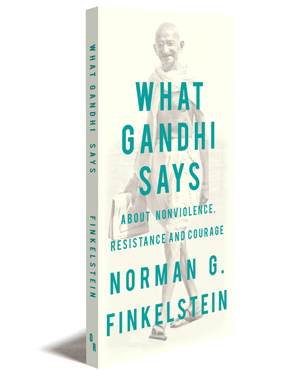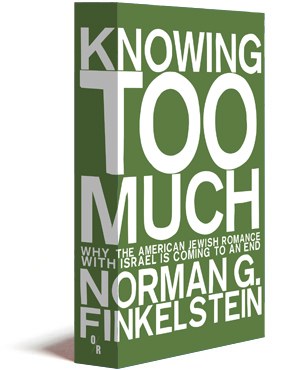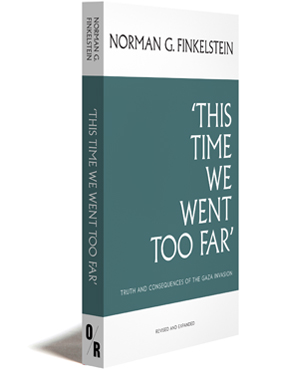What Gandhi Says
ABOUT NONVIOLENCE, RESISTANCE AND COURAGE
"Many of us believe we know who Gandhi was and what he represented. The truth is something quite different, and important. As Norman said to me when he gave me this tiny volume, you can read it in one sitting. That will be an essential sitting for anyone who is interested in the matter of genuine courage in the pursuit of just goals." —Julian Assange
TweetBuy This Book
|
Paperback: $10/£6
|
E-book: $7/£5
|
Print + E-book: $12/£8
|
About the Book
The Occupy movement and the protests that inspired it have focused new attention on the work of Mahatma Gandhi, who set out principles of nonviolent resistance during the struggle for Indian Independence, principles that found their echo in Tahrir Square, Puerta del Sol and Zuccotti Park some half a century later.
If there has been widespread recognition of Gandhi’s role in developing the tactics underpinning the revolutionary upsurges of the past year, few have stopped to examine what Gandhi actually said about the relationship between nonviolence, resistance and courage.
Step forward Norman Finkelstein, who, drawing on extensive readings of Gandhi’s copious oeuvre and intensive reflection on the way that progress might be made in the seemingly intractable impasse of the Middle East, here sets out in clear and concise language the basic principles of Gandhi’s approach.
There is much that will surprise in these pages: Gandhi was not a pacifist; he believed in the right of those being attacked to strike back and regarded inaction as a result of cowardice to be a greater sin than even the most ill-considered aggression. Gandhi’s calls for the sacrifice of lives in order to shame the oppressor into concessions can easily seem chilling and ruthless.
But Gandhi’s insistence that, in the end, peaceful resistance will always be less costly in human lives than armed opposition, and his understanding that the role of a protest movement is not primarily to persuade people of something new, but rather to get them to act on behalf of what they already accept as right – these principles have profound resonance in both the Israel-Palestine conflict and the wider movement for justice and democracy that began to sweep the world in 2011.
Publication June 2012 • 100 pages
paperback ISBN 978-1-935928-79-9 • ebook ISBN 978-1-935928-80-5
About the Author

Norman G. Finkelstein received his doctorate in 1988 from the Department of Politics at Princeton University. For many years he taught political theory and the Israel-Palestine conflict. Finkelstein is the author of eight books besides this one, which have been translated into more than 40 foreign editions: Knowing Too Much: Why the American Jewish Romance with Israel Is Coming to an End (OR Books, 2012); This Time We Went Too Far: Truth and Consequences of the Gaza Invasion (OR Books, 2010, expanded paperback edition, 2011); Goldstone Recants: Richard Goldstone Renews Israel’s License to Kill (OR Books, 2011), Beyond Chutzpah: On the Misuse of Anti-Semitism and the Abuse of History (University of California Press, 2005, expanded paperback edition, 2008); The Holocaust Industry: Reflections on the Exploitation of Jewish Suffering (Verso, 2000, expanded paperback edition, 2003); Image and Reality of the Israel-Palestine Conflict (Verso, 1995, expanded paperback edition, 2003); with Ruth Bettina Birn, A Nation on Trial: The Goldhagen Thesis and Historical Truth (Henry Holt, 1998); and The Rise and Fall of Palestine: A Personal Account of the Intifada Years (University of Minnesota, 1996).
In the Media
The Gandhi Foundation, June 4th 2013
New Left Project, October 24th 2012
The New Inquiry, July 18th 2012
Op Ed News, July 10th 2012
Palestine News Network, July 10th 2012
Progressive Radio Network, June 14th 2012
Read an Excerpt
A wave of popular revolts is now sweeping the planet.
In many instances, it was an act of nonviolent civil resistance that either sparked the local uprising or marked its turning-point.
In Tunisia, it was the self-immolation of a street vendor. In Cairo, it was the assault by goons on camelback against nonviolent protesters in Tahrir Square. In New York City, it was the voluntary mass arrest of demonstrators on the Brooklyn Bridge.
These actions “quickened” the public conscience. People who had stood by indifferently and passively for decades suddenly came to life.
The acts of nonviolent resistance resonated with a broad public because of an already existing consensus that the system was unjust.
In spirit and form, the epic events of the past year appear like a page out of Gandhi’s life.
But it is also easy to see the limitations of Gandhi’s teachings.
Neither Ben-Ali of Tunisia nor Mubarak of Egypt was “melted” by the people’s self-suffering. They had to be forced from power. Neither the liberal mayor of Oakland nor the liberal mayor of New York let their bleeding hearts prevent them from brutally clearing out the “Occupy” movement.
Self-suffering might sting the conscience of the 99 percent and get them to act. But only the concerted and courageous power of the overwhelming majority will get the 1 percent to budge and be gone.
The only language that the 1 percent understand, as Gandhi conceded in his more candid moments, is “open rebellion.”
Still, Gandhi had a point. However costly the price in lives of nonviolent resistance, it is probably still less than the price of violent rebellion, while a nonviolent struggle augurs better for the future than an armed struggle.
Once armed foreign forces entered Libya in “support” of the popular revolt, the number of deaths skyrocketed. The probable order of magnitude is ten fold greater than the total deaths in any of the other revolts convulsing the Arab world. The result of the armed victory in Libya is a power once again in thrall to external forces and likely to make most Libyans soon yearn for a return to the days of Qaddafi.
“Violence may destroy one or more bad rulers, but,” Gandhi warned, “others will pop up in their places.”
The unspoken prejudice against nonviolence is that it is cowardly and unmanly. But nonviolence as Gandhi conceived it can hardly be dismissed on these counts. It takes an awful lot of bravery to march unarmed into the line of fire “smilingly” and “cheerfully,” and get oneself blown to pieces.
In his last days and amidst inter-communal slaughter, Gandhi insisted on opening his prayer services in Hindu temples with a verse from the Koran. It enraged Hindu fanatics to the point that one of them finally murdered him.
Who would be so bold as to deny that Gandhi’s was a heroic death?
If a criticism is to be leveled against Gandhi’s nonviolence, it is that he sets the bar of courage too high for most mortals to vault.
It is a central conceit of Gandhi’s doctrine that nonviolent resistance in the face of evil is not only more ethical than violence but could also achieve the same results.
The jury is still out on this.
It is certainly doubtful, as Arundhati Roy has pointed out, that nonviolent resistance can achieve any results against a ferocious enemy acting outside the glare of public scrutiny.
But what can be said with confidence is that the results of violent resistance have been at best mixed.
The day after, bloody revolutions seem always to disappoint, and in the scramble to the top, those with the most blood on their hands seem always to get there first.
The challenge for the younger generation as it embarks on the struggle to remake the world is to see how far it can advance without having to use violence.
The further along it gets nonviolently, the more likely it is that the new world will also be a better one.






